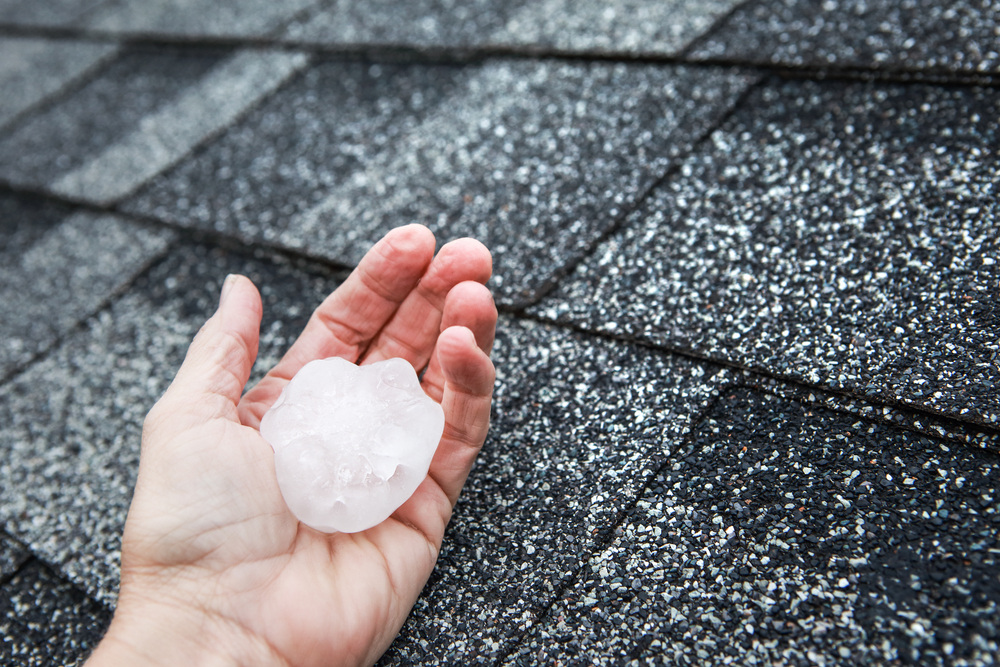
There are a few ways to keep your home in the best shape for severe winter weather, so make sure …

First, you might find warning signs of structural damage in the interior of your home. In addition to drywall cracks you may find indicators such as bowed walls, gaps where the walls and floors meet, nails popping out of drywall, uneven or bouncy floors, windows or doors that stick, or cabinets that swing open by themselves.
Outside, fine, small cracks in the exterior walls of your home usually aren’t serious. The most common and least severe types of cracks are vertical cracks that run up and down that are the result of your foundation settling — and don’t panic, foundation settling is a common occurrence even in new construction.
You may also find diagonal cracks that runs at an angle. These cracks are caused by differential settling, meaning one side of a home’s foundation is settling lower than the rest of the home’s foundation.
The most serious type of foundation cracks run horizontally, because they’re a symptom of a more serious structural problem that can include soil pressure outside or hydrostatic pressure that cause the basement walls to bow. The climate in your region can also be a factor including ice and snow, excessive heat or rain, extensive flooding and droughts.
Method No. 1: Do It Yourself

The process of fixing foundation cracks can range from a simple trip to the hardware store to paying thousands of dollars to professionals that specialize in these types of repair.
First, hairline cracks probably don’t require professional assistance. With a little Internet research and maybe a video tutorial or two, you can learn to patch tiny cracks yourself. There are a variety of substances that can fill small cracks including polyurethane, silicon or latex concrete caulk as well as hydraulic cement but the most tried and true method for repairing hairline cracks is an epoxy injection. Epoxy is lightweight, flexible and waterproof and can permanently seal cracks in your foundation.
However, if you suspect the cracks in your foundation are more widespread, indicative of other structural problems in the foundation or elsewhere in the home, or are representative of other complications, it’s better to consult with a professional. Simply filling a crack with epoxy and hoping that it holds is not a good plan. However, if you do successfully, it’s worth applying sealant to the entire foundation surface to add more protection.
Method No. 2: Hire a Professional

If your foundation problems are moderate or severe, it’s time to call in professionals. First, contact a good foundation repair contractor and have them inspect your concrete slab, foundation or basement. Sometimes a contractor will call in a structural engineer to issue a formal report that generally costs between $350 and $500 for most homes.
The contractor will walk you through your repair options but be sure to get a written estimate before anyone starts work on your home. It’s also worth asking if the contractor offers a foundation repair warranty, or better yet a transferable lifetime warranty, which adds home value.
Finally, be prepared for the cost. Most homeowners will pay around $4,000 to repair foundation issues. However, foundation repairs involving major stabilizing work can cost $10,000 or more.

There are a few ways to keep your home in the best shape for severe winter weather, so make sure …

During the floods that erupted in Texas in March and April of 2016, multiple days of heavy rainfall averaging 15 to …

We know you do not want to deal with those lengthy phone calls, the hassle of finding a contractor and …

Photo by David Brown Timing is a crucial factor to consider when contemplating the replacement of your roof. Choosing the …

When it comes to severe weather, hailstorms can wreak havoc on roofs, leaving behind costly damage if not detected and …

Springtime has been a great time to tackle home improvement projects like painting, and mixing up the colors of your home’s exterior …